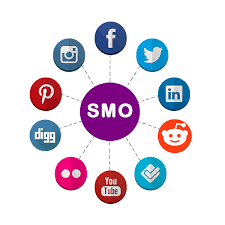In today's digital age, having a strong presence on social media platforms is crucial for businesses aiming to expand their reach, engage with their audience, and drive growth. However, simply having a presence is not enough. To truly leverage the potential of social media, businesses need to optimize their profiles and content for maximum visibility and impact. This is where social media optimization (SMO) comes into play.
What is Social Media Optimization?
Social media optimization is the process of enhancing the visibility and performance of a brand's social media profiles and content to increase engagement, drive traffic, and ultimately, achieve business goals. Unlike search engine optimization (SEO), which focuses on improving a website's visibility in search engine results, SMO revolves around optimizing content specifically for social media platforms.
Key Components of Social Media Optimization
- Profile Optimization: The first step in SMO is optimizing your social media profiles. This includes ensuring that your profile information is complete, accurate, and consistent across all platforms. Use relevant keywords in your bio and description to make it easier for users to find you.
- Content Strategy: A well-defined content strategy is essential for effective SMO. Determine the types of content that resonate with your audience and align with your brand identity. Whether it's informative articles, captivating visuals, or engaging videos, tailor your content to meet the preferences of your target audience.
- Hashtag Strategy: Hashtags play a crucial role in increasing the discoverability of your content on social media platforms. Research relevant hashtags within your industry and incorporate them strategically into your posts to expand your reach and attract new followers.
- Engagement Tactics: Building meaningful relationships with your audience is key to successful SMO. Respond promptly to comments, messages, and mentions, and actively engage with your followers by liking, sharing, and commenting on their posts. Encourage user-generated content and foster a sense of community around your brand.
- Analytics and Monitoring: Regularly monitor your social media performance using analytics tools provided by each platform. Track key metrics such as reach, engagement, and conversions to evaluate the effectiveness of your SMO efforts. Use these insights to refine your strategy and optimize your future content.
Benefits of Social Media Optimization
- Increased Brand Visibility: By optimizing your social media profiles and content, you can increase your brand's visibility and attract more followers and potential customers.
- Enhanced Engagement: Engaging content and proactive interaction with your audience can lead to higher levels of engagement, including likes, shares, and comments.
- Improved Website Traffic: Effective SMO tactics can drive traffic to your website, ultimately increasing the likelihood of conversions and sales.
- Greater Brand Authority: Consistent, high-quality content can help establish your brand as an authority in your industry, earning the trust and loyalty of your audience.
In conclusion, social media optimization is a powerful strategy for maximizing the impact of your presence on social media platforms. By implementing the key components outlined above and consistently delivering valuable content to your audience, you can unlock the full potential of social media to achieve your business objectives.





Comments